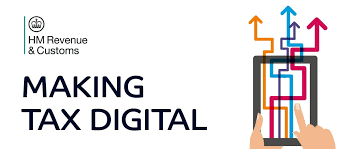As promised here is our follow up blog covering one of the key headline changes under FRS 102. Leases.
We’ve talked for some time about ‘bringing operating leases’ onto the balance sheet – but what does that actually look like in practice? We thought the best way would be to show a simplified example.
Example
Let’s say a company has a lease arrangement for a property for 5 years incurring an annual rental charge of £100,000 commencing on 1 January 2026. Assuming a year end of 31 December, under current FRS 102 this would be shown as a profit and loss charge of £100,000 per year and nothing on the balance sheet.
To bring this lease onto the balance sheet there is no need to know the underlying value of the property you are using as you are not getting the benefit of the entire value of the property. The asset you are getting is the right to use this property for a period of 5 years. So, how is this valued?
In simple terms the £500,000 of rental payments are considered to be loan repayments. When a loan is made it is usual for interest to be charged and therefore to work out the asset or “capital” portion of the loan, the interest element needs to be excluded. This is done via a discounting mechanism using an assumed rate of interest at which the company could borrow at externally. In practice working out this assumed rate is likely to involve an element of estimation but for this example we will use a rate of 10%. For illustration purposes we have also assumed that the rent is paid annually at the end of each year.
| Year | Payment | Discounted payment |
| 2026 | £100,000 | £90,909 |
| 2027 | £100,000 | £82,645 |
| 2028 | £100,000 | £75,131 |
| 2029 | £100,000 | £68,301 |
| 2030 | £100,000 | £62,092 |
| Total | £500,000 | £379,079 |
The sum of the discounted payments over 5 years is the right to use asset and liability to be included on the company’s balance sheet at 1 January 2026, so £379,089.
The asset will then be depreciated straight line over 5 years, so £75,818 per year leaving no balance left at the end of the 5 year lease period.
The liability is treated like any other loan with interest applied at a rate of 10% and the repayments taken off the balance as follows:
| Year | Liability at 1 Jan | 10% Interest | Repayment | Balance at 31 Dec |
| 2026 | £379,079 | £37,908 | (£100,000) | £316,987 |
| 2027 | £316,987 | £31,699 | (£100,000) | £248,685 |
| 2028 | £248,685 | £24,869 | (£100,000) | £173,554 |
| 2029 | £173,554 | £17,355 | (£100,000) | £90,909 |
| 2030 | £90,909 | £9,091 | (£100,000) | (£0) |
Impact
The impact of this adjustment on the financial statements for the year ended 31 December 2026 would be:
| Profit & Loss account | ||
| Pre FRS 102 (2024) | Post FRS 102 (2024) | |
| Rent | (£100,000) | £0 |
| EBITDA | (£100,000) | £0 |
| Depreciation | £0 | (£75,816) |
| Interest | £0 | (£37,908) |
| Profit before tax | (£100,000) | (£113,724) |
| Balance Sheet | ||
| Pre FRS 102 (2024) | Post FRS 102 (2024) | |
| Tangible fixed assets | £0 | £303,263 |
| Cash | (£100,000) | (£100,000) |
| Lease liabilities | £0 | (£316,987) |
| Net assets | (£100,000) | (£113,724) |
Tax Impact?
For those whose mind always makes the immediate leap between profit before tax and the cash tax that will need to be paid you will see there is a small corporation tax timing benefit to the changes. Although the total cost to hit the profit and loss account over the 5 years is £500,000, the interest charge under new FRS 102 results in a higher expense (which is deductible for corporation tax purposes) in the earlier years. This is a timing benefit only as, of course, the interest charge will be lower in later years and which could also expose some profit to higher corporation tax rates should they rise in the 5 year window.
Of course, real life is never as simple as the sterile example above. Complicated lease arrangements or even a high volume of simple leases can make for some complex accounting treatment. Our clients reporting under IFRS have been making these adjustments for some time now, whether making calculations manually or by utilising available software solutions and therefore we are well placed to assist you through this process.
If you have any queries please get in touch with your usual team member or Kate King on kate.king@burgisbullock.com or 01926 451000.


 are you ready for the next phase of making tax digital?
are you ready for the next phase of making tax digital?